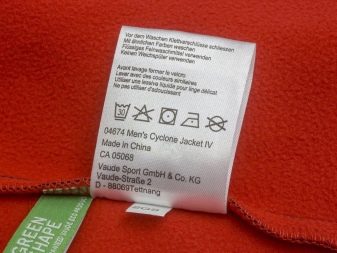All about softshell fabric

Softshell fabric is actively used for the production of equipment for sports. On its basis, they produce clothes for people leading an active lifestyle.

Description of fabric
The innovative softshell material contributes to the conquest of new peaks, protects from bad weather. The fabric owes its appearance to the Buffalo corporation. It was there that work was carried out to create a formula for comfortable clothes to wear as an alternative to a rough and heavy wind jacket. The material is provided with a breathable pertex layer.
Among its advantages are:
- softness;
- ease;
- good thermal insulation properties.
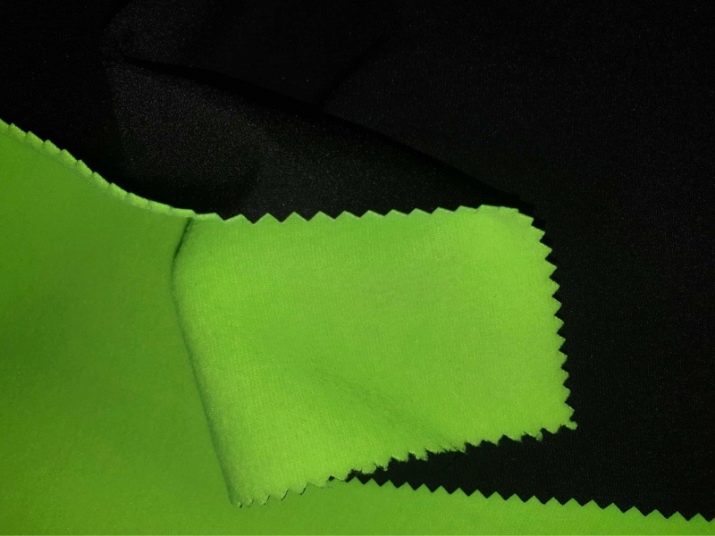
Clothes made from softshell not afraid of pouring rain and heavy wind, it gives a feeling of comfort to its owners. For a long time, climbers and hikers, as well as athletes, have dreamed of such equipment.
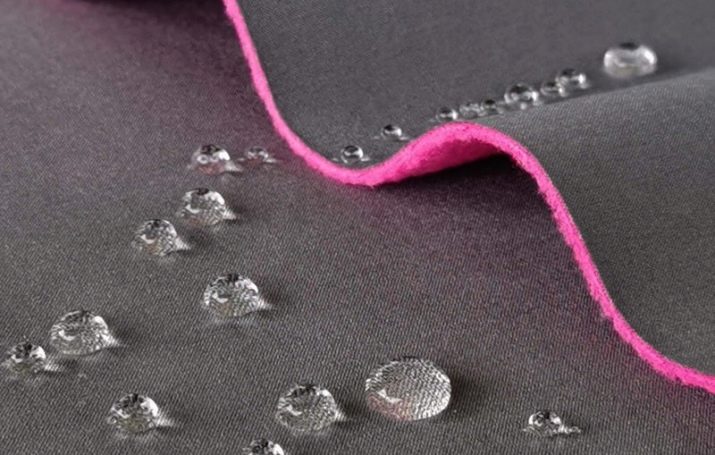
Softshell clothing is a contrast to the 3-layer Hardshell outfit. The need to put on thermal underwear and a fleece jacket under the upper jacket for additional insulation has disappeared. Previously, such a combination provided moisture removal, but the air was poorly passed through.
The two-layer combination has proven itself much better. It uses external and heat-insulating levels.
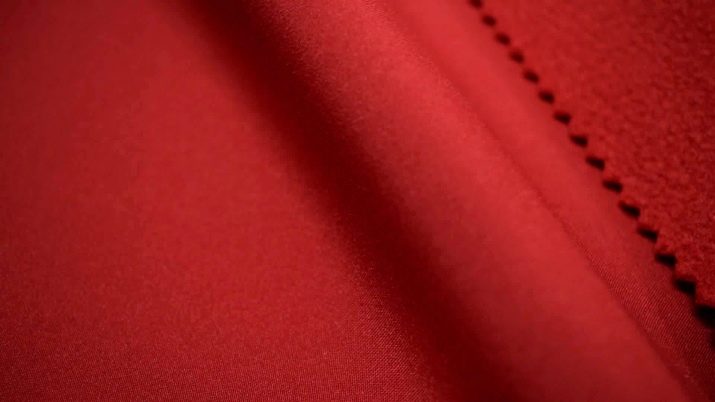
The Soft Shell concept was proposed by Patagonia, an innovative clothing company that is light and warm at the same time. Equipment made from high-tech materials quickly gained popularity. In Russian, the word "softshell" is translated as a shell.
The fleece fabric is combined with a nylon pertex layer - this is the basis of the material. The cover consists of a large number of fibers that wick away sweat.The moisture from the precipitation warms up to the state of the body, after which it evaporates.

The softshell has no extra volume, it is distinguished by its lightness. The material can withstand temperatures down to minus 7 degrees. Until the thermometer drops below this mark, you don't feel cold in a light jacket. Such equipment is especially in demand among people who make long ascents and hikes. It provides comfort and dryness, does not restrict movement. It is easy to look stylish in it.
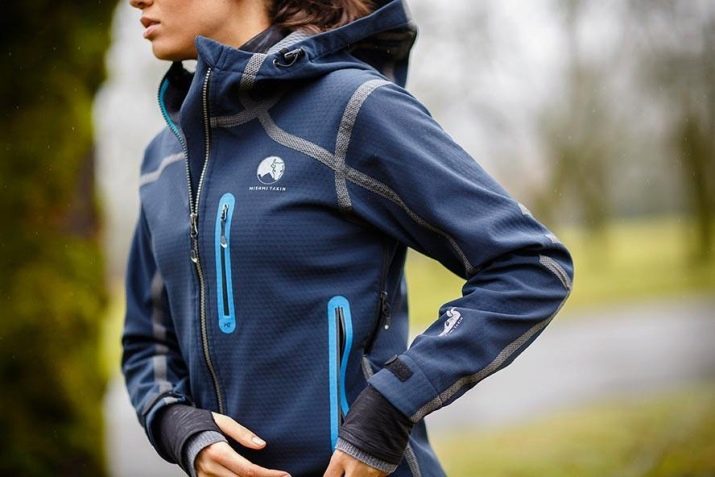
The innovative material is not blown through and provides reliable protection against wind gusts. It retains heat with ease in moderate cold conditions. It is characterized by increased vapor permeability and tensile strength. The softshell provides quick removal of excess moisture during workouts. The breathability of the garment keeps it dry in rainy weather.

Of the mechanical properties, in addition to tensile strength, we note elasticity and comfortable fit. A softshell can be compared to a stretch. The membrane does not add weight and volume to the equipment. The canvas stretches in different directions, during movement recreates the contours of the body. Delivers pleasant tactile sensations.

There are few drawbacks to softshell; such clothes are not recommended to be worn in severe frost.
For the manufacture of high-tech fabrics with several layers, artificial fibers are used. It consists of:
- polyester;
- lycra;
- polyurethane;
- cordura;
- polyamide.
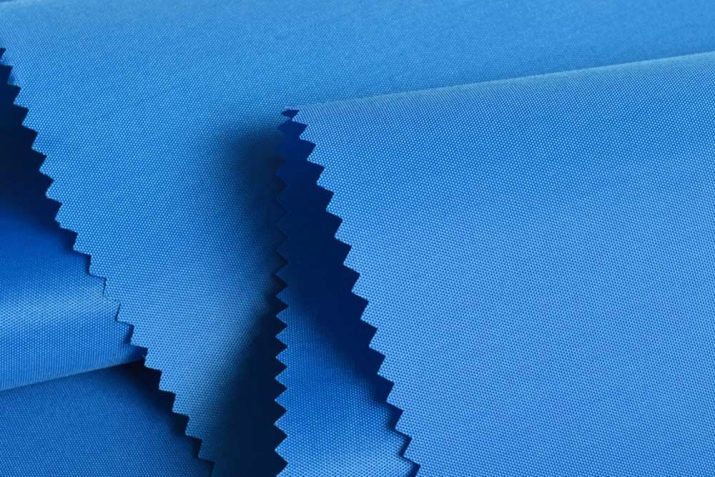
New versions may contain wool and other fibers of natural origin.
The upper part of the material is made on the basis of a fabric with increased density and elastic properties. These give strength, provide protection from adverse weather conditions.
In the lower part there is a membrane with a fine pile, on which the functional parameters of the material depend. It makes the fabric waterproof and windproof. The inner layer is in contact with the body, retains heat and dryness, and removes moisture in a timely manner. When the equipment gets wet in the rain, it takes a minimal amount of time to dry and occurs during wear. At the same time, the skin does not cool, the wearer of the clothing does not feel discomfort.

Varieties
The softshell owes its origins to research that has been carried out over the years. They were aimed at creating a material that protects against adverse weather events. The presence of an additional membrane and several layers in the composition give the canvas uniqueness.
According to the structure, softshell is subdivided for membrane and membraneless varieties. Each is intended for a specific activity. The membrane variety is not blown by the wind and does not get wet. It is purchased for autumn hiking and warm winter.... The second variety is used for sewing clothes intended for summer training.
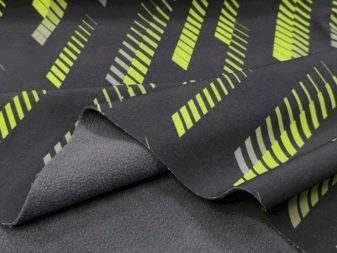

There are three layers in membrane materials, they include smooth stretch, fleece. Manufacturers use moisture-proof material that replaces the windshield. It is great for urban wear and hiking. The membrane layer gives the products durability, they do not rustle when moving, and they provide pleasant tactile sensations.

The fabric is absolutely not blown through, minimal aeration is inherent in it.
Windproof fabric in conditions of normal humidity and light frost provides optimal ventilation, protects against wind gusts. It is often used for sewing clothes intended for demi-season wear.
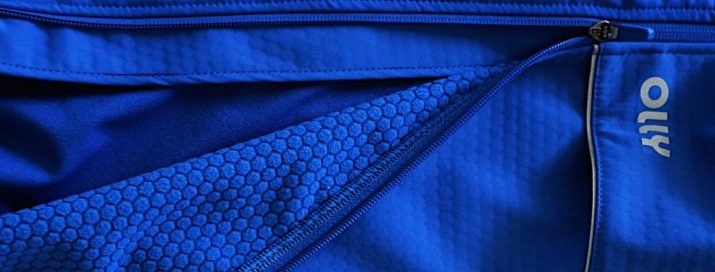
A fabric with reduced wind protection is used for intense training.... It wicks away sweat droplets from the body, even in high humidity conditions.
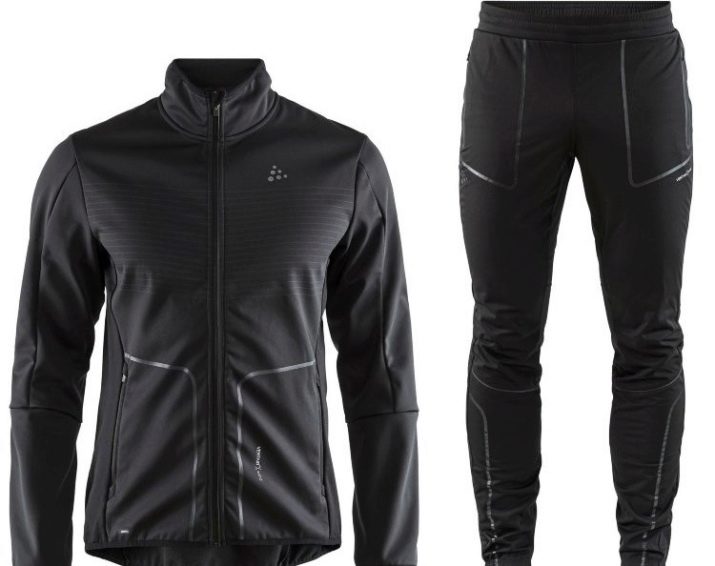
Membrane-free materials are used to make clothes that are worn in dry and calm weather. It gets wet even in light rain.But it is characterized by increased breathability.
The fabric contains elastic stretch and soft fleece.
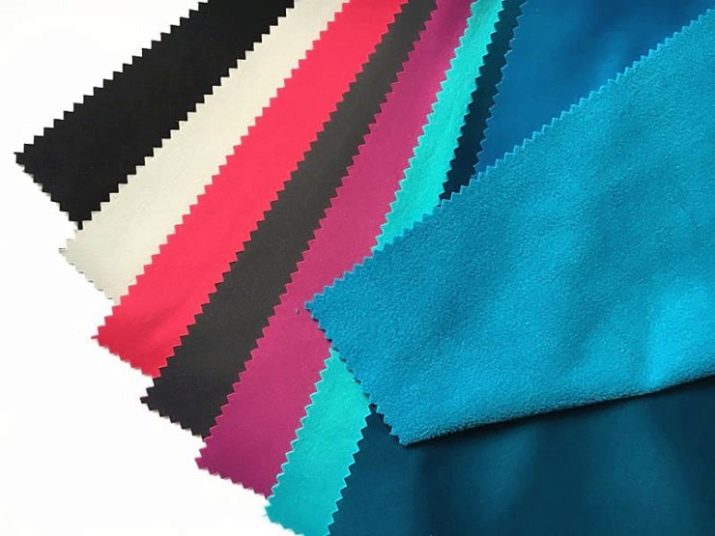
The traditional variety is a great replacement for 3-layer gear. The upper part of such matter is dense and heavy, practically not ventilated. The inner layer of dense fleece perfectly retains heat when the temperature drops to -7 degrees. The disadvantage of the material is that it does not fit the body snugly enough, it lacks elasticity.
PolartecWindPro has a textile surfaceIt is preferred by climbers for its excellent aeration and ability to keep warm. Thick fabric provides excellent wind protection.

Polartec PowerStretch is analogous to the first versions of the softshell... Lightness and stretch characteristics are inherent in it. It is perfect for sewing clothes designed for training in cool conditions when there is no wind.

Power Shield features maximum breathability, it reliably protects against wind and moisture.
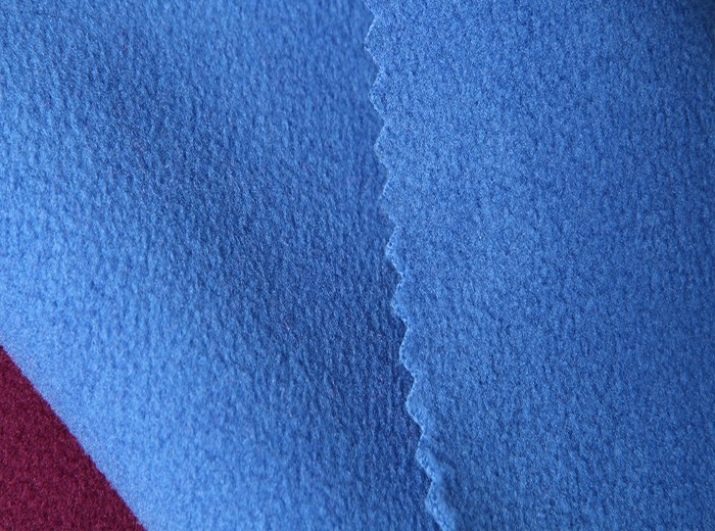
Non-insulated
This type is an elastic fabric, which includes polyester or polyamide fibers with silicone impregnation.
The most popular is insulate, which consists of three layers., endowed with high moisture and windproof characteristics, increased vapor permeability.
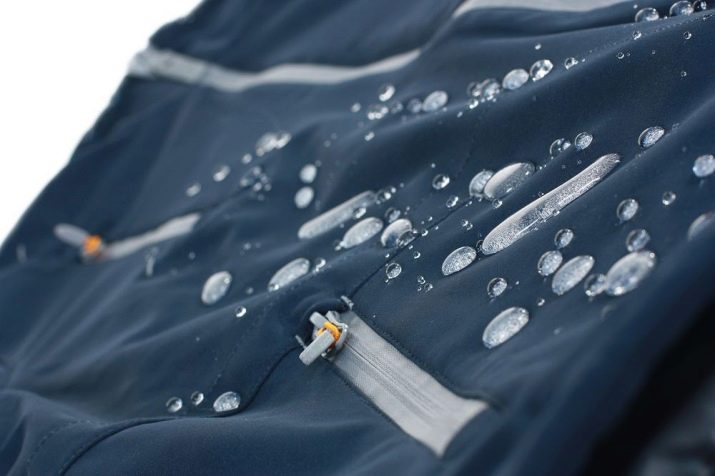
Hybrid
Combined version, combining the properties of both types of softshell. It is a versatile material that is in high demand.
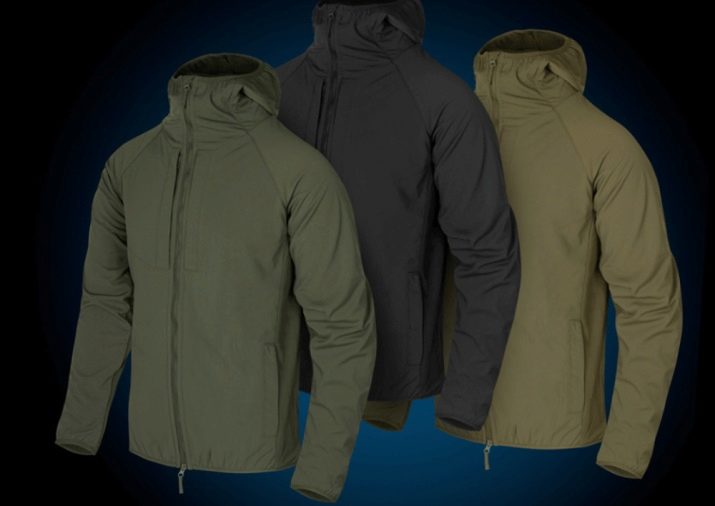
Scope of use
Softshell clothing is gaining popularity.
- Jackets made of this fabric resemble ordinary sweaters, but at the same time they have special protective properties. They are worn not only by athletes, but also by ordinary people, as well as by representatives of the armed forces and rescuers.
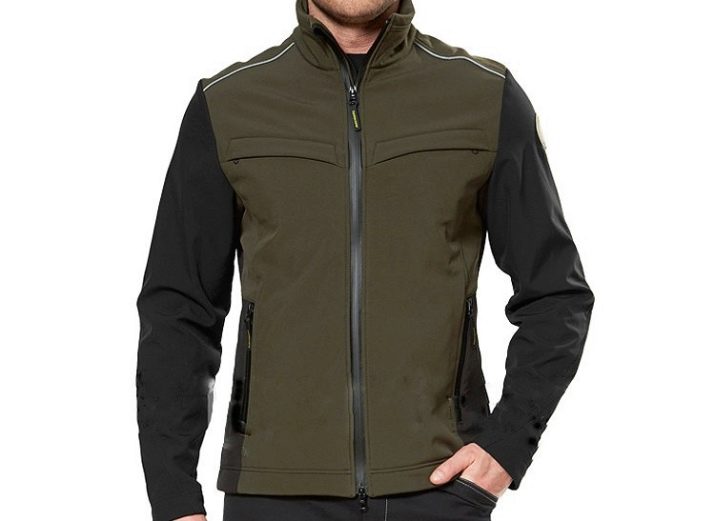
- On the basis of this material, children's and adult clothing is sewn for summer, winter, demi-season socks. One of the main advantages of the fabric is its versatility. Textile factories offer softshell outerwear, as well as trousers, sweaters and much more.


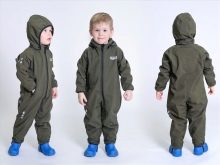
- Such clothes provide maximum comfort when playing sports, they can be used in everyday life. The hydrophobic layer contributes to the creation of an optimal microclimate. Softshell clothing is lightweight and can be worn with thermal underwear and fleece jackets in winter when the temperature drops.

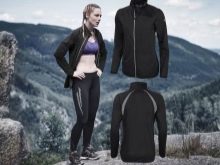
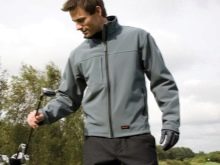
- The softshell provides for a windproof layer, therefore, it can easily replace a raincoat in spring or autumn. Clothes made from innovative fabrics are convenient to take with you on short hiking trips.

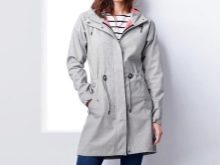
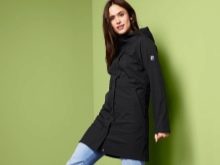
Criterias of choice
When choosing clothes made of softshell fabric, decide on its purpose. Jackets with trousers with a tear-resistant outer coating and a fleecy lining are made of lightweight fabric.
Clothes from this series are characterized by increased resistance to wear, good moisture removal and protection from wind. It is convenient for skiing, cross-country running, snowshoeing. Often purchased by bikers, it is great for city wear.


The fabric with an intermediate membrane layer is able to protect against heavy rain... The membrane will block moisture and prevent it from getting wet. One softshell jacket replaces the classic three-layer outfit.
Insulated variety of matter keeps warm even when wet.
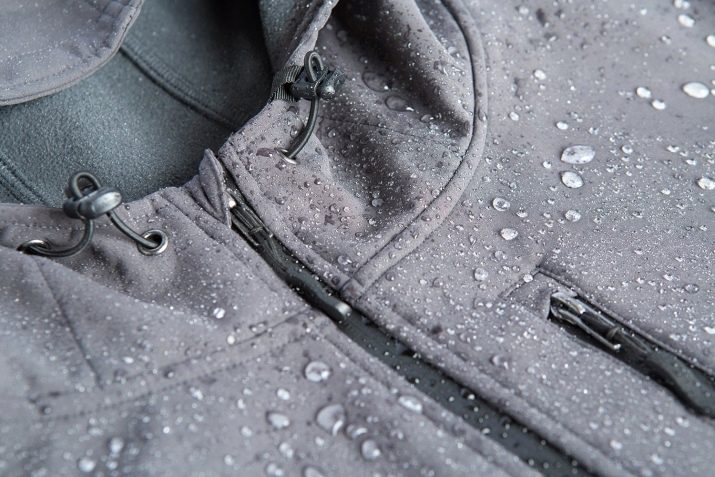
The high quality of the fabric is guaranteed by the manufacturer.
Brands such as Haglofs and Marmot should be preferred.


Particular attention should be paid to the presence of additional protection, to ensure the strength and tightness of the zipper. Inspect the seams, they should be well glued.
An adjustable drawstring hood and Velcro straps on the sleeves are encouraged.
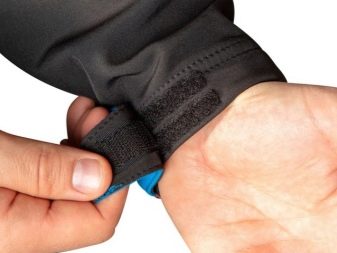
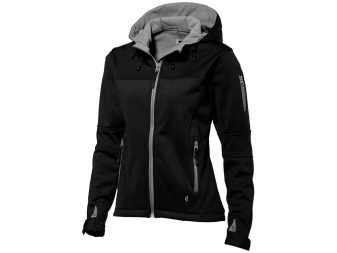
How to care?
Clothes made of softshell fabric serve for a long time, if you take care of it correctly, do not allow the influence of negative factors.
- Microvap is susceptible to the action of creams, insect repellents. Their contact with clothing is fraught with a decrease in hygroscopic properties, a violation of the integrity of the protective membrane layer.
- Negatively affects such products and drying in direct sunlight, next to a fire, near heating appliances.
- When washing such items, follow the directions on the label. Softshell items are used for washing when they are heavily soiled. In other cases, cleaning with a soft brush or wiping the stained areas with a towel is sufficient.
- It is allowed to wash softshell items by hand or in a typewriter. In the second case, it is necessary to set the delicate mode. The recommended water temperature for washing is 30 degrees.
- Prefer mild detergents with a liquid consistency... Best used for sportswear and moisture-repellent materials.
- Dry things on a hanger, after having straightened them. There must be natural ventilation. Drying things on batteries is unacceptable.
- There is no need to iron the clothes after washing. It is recommended to periodically treat it with an impregnating agent to renew the impregnation.
- Products made from softshell should not come into contact with bleaches... Do not use fabric softeners for washing, the chemical components in their composition will clog the membrane pores.
- It is not allowed to wash softshell clothes often. - this will gradually wash off the moisture-repellent impregnation. Although one of the manufacturers of such equipment assures that nothing terrible will happen, and even, on the contrary, washing will increase the breathability of the fabric. After cleaning, the clothes should be treated with a composition that maintains moisture protection characteristics.
- The main thing is not to use soap to wipe off stains on softshell fabric.... Failure to follow the rules for care is fraught with damage to things. Their service life is reduced by means intended for the care of leather products, repellents.
- Regular maintenance is based on restoring the basic characteristics of the material. When washing, the product must be turned out to the wrong side.
